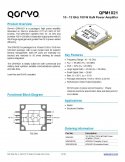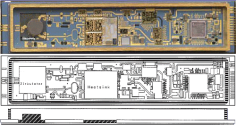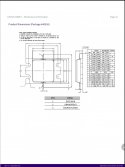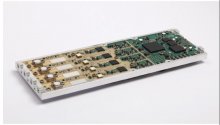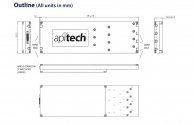I don't know what the size of the individual amplifiers in that TRM are. I added it as an illustration to show much extra space there is around a HPA in a typical TRM: in that example the TRM is about 4x wide as the HPA.
To save space, many AESAs use quad-channel TRMs, like the this tightly packed 9-10GHz GaN TRM from ApiTech:
View attachment 90219
The TRM is 59.5 mm wide. At 10 GHz, to maintain a 60 degree FOV individual transmitters have to be separated by 0.54 lambda or 16.2mm. 59.5/4=14.875mm, so this TRM can fit neatly into an array with a +/- 60º FOV. The power output maxes out at only 10W, so they can use HPAs even smaller than 6mm x 7mm. I am guessing the HPAs are the beige squares that noticeably stand out from the PCB? It looks like there's easily room for 10 of them to fit side-by-side on the PCB. If I include the metal frame, about 11 should fit. Therefore, I estimate them to be between 5 and 5.5 mm in size.
View attachment 90220
They have a nice video showcasing how an array is built out of these TRMs:


